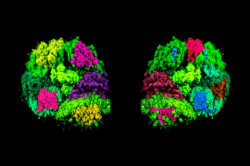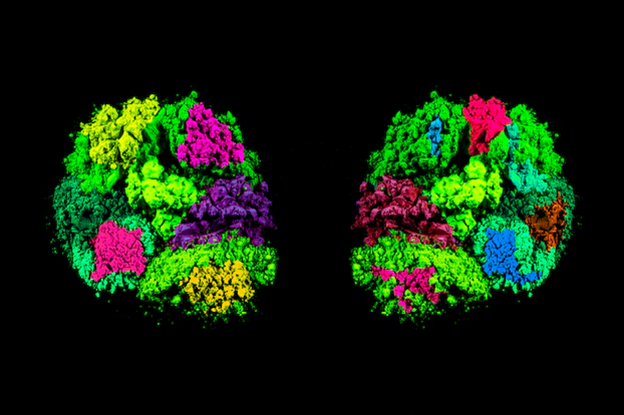Introduction
Causal inference, the discipline of determining cause-and-effect relationships, has emerged as a critical area of study across various fields, including medicine, economics, social sciences, and computer science. Moving beyond simple correlations, causal inference seeks to answer the question “Why?” behind observed phenomena, allowing for better prediction, informed decision-making, and effective interventions. This paper will explore the fundamental concepts of causal inference, the challenges it faces, the common methodologies employed, and its increasing importance in a data-driven world.
The Challenge of Causation:
The cornerstone of causal inference is the distinction between correlation and causation. Often, two variables may appear to be linked, but this association could be due to a confounding factor or simply be a matter of chance. The classic example is the correlation between ice cream sales and crime rates. Both tend to rise in the summer, but the increase in temperature is the underlying cause for both, rather than one causing the other.
This highlights the fundamental problem of causal inference: we can only observe what did happen, not what would have happened if a different action had been taken. This counterfactual reasoning, asking “What if…?” is at the heart of identifying causal effects. We can observe someone taking a certain medication and getting better, but we can’t simultaneously observe what would have happened had they not taken the medication. This unobservable counterfactual makes isolating causal effects a complex and challenging task.
Key Concepts and Terminology:
Understanding the language and concepts within causal inference is crucial for navigating its complexities. Here are some core terms:
- Treatment: The variable whose causal effect we are interested in understanding (e.g., taking a medication, participating in a job training program).
- Outcome: The variable we believe is influenced by the treatment (e.g., health status, employment rate).
- Confounder: A variable that influences both the treatment and the outcome, creating spurious correlation (e.g., socioeconomic status influencing both access to healthcare and overall health).
- Counterfactual: The outcome that would have occurred if the individual had received a different treatment (e.g., the health status of someone who took the medication, had they not taken it).
- Potential Outcomes: For each individual, the outcome that would occur under each possible treatment.
- Causal Effect: The difference between the potential outcomes for an individual under different treatments.
- Randomized Controlled Trial (RCT): A study design where participants are randomly assigned to treatment and control groups, minimizing the effect of confounding variables.
Methodologies for Causal Inference:
Various methods have been developed to tackle the challenges of causal inference and estimate treatment effects. These methods vary in their assumptions and applicability, and the choice of method depends largely on the available data and the specific research question.
- Randomized Controlled Trials (RCTs): Often considered the “gold standard” for causal inference, RCTs randomly assign individuals to a treatment or control group. Random assignment ensures that the two groups are, on average, identical in all characteristics except for the treatment, thus minimizing the influence of confounding variables. The difference in average outcomes between the two groups can then be attributed to the treatment. However, RCTs are not always feasible or ethical, particularly in social sciences and policy evaluation.
- Observational Studies: When RCTs are not possible, researchers rely on observational studies, where they observe individuals who have already chosen their treatments. These studies require careful handling of confounding variables. Common techniques include:
- Regression Analysis: Statistical models that attempt to control for confounding variables by including them as covariates in the regression equation. However, regression can be biased if all confounders are not measured or are measured imperfectly.
- Propensity Score Matching (PSM): Estimates the probability of receiving treatment based on observed characteristics (the propensity score). Individuals with similar propensity scores but different treatment assignments are then matched, allowing for a comparison of outcomes.
- Instrumental Variables (IV): Uses a variable (the instrument) that is correlated with the treatment but only influences the outcome through its effect on the treatment. IV methods are particularly useful when confounding is suspected, but require a strong and valid instrument.
- Difference-in-Differences (DID): Compares the change in outcomes between a treatment group and a control group before and after the intervention. DID relies on the assumption that the two groups would have followed parallel trends in the absence of the treatment.
- Regression Discontinuity Design (RDD): Exploits a sharp cutoff point for treatment eligibility. Individuals just above and below the cutoff are assumed to be similar, except for their treatment assignment.
- Causal Bayesian Networks: Graphical models that represent causal relationships between variables. These networks allow researchers to visualize and reason about causal pathways, and to estimate causal effects using Bayesian inference. Building accurate causal networks requires expert knowledge and careful validation.
- Do-Calculus (Judea Pearl): A mathematical framework for reasoning about causal effects in graphical models. Do-calculus allows researchers to manipulate causal pathways in the graph and predict the effects of interventions.
Challenges and Limitations:
Despite the advancements in causal inference, several challenges and limitations remain:
- Unmeasured Confounding: If all relevant confounders are not observed and accounted for, the estimated causal effects may be biased. This is often a persistent problem in observational studies.
- Selection Bias: If the individuals who receive treatment are systematically different from those who do not, the estimated effects may be biased. Addressing selection bias requires careful modeling of the selection process.
- Measurement Error: Errors in measuring variables can lead to biased estimates of causal effects.
- Generalizability: Causal effects estimated in one population may not generalize to other populations with different characteristics.
- Causal Discovery: Determining the causal structure of a system from observational data is a challenging problem. Many different causal structures can be consistent with the same observed data.
- Ethical Considerations: Causal inference can be used to inform policy decisions that have significant ethical implications. It is crucial to consider the potential consequences of interventions and to ensure that they are implemented fairly and ethically.
Applications and Future Directions:
Causal inference is increasingly being applied in various fields:
- Medicine: Identifying effective treatments for diseases and understanding the causal effects of risk factors.
- Economics: Evaluating the impact of policy interventions, such as tax cuts or welfare programs.
- Social Sciences: Understanding the causes of poverty, crime, and inequality.
- Public Health: Developing interventions to promote healthy behaviors and prevent disease.
- Machine Learning: Improving the interpretability and robustness of machine learning models by incorporating causal reasoning. Causal inference can help models learn to generalize to new environments and avoid spurious correlations.
- Business: Optimizing marketing campaigns and improving customer retention by understanding the causal drivers of customer behavior.
Future research in causal inference is focused on:
- Developing more robust methods for handling unmeasured confounding.
- Improving the accuracy of causal discovery algorithms.
- Integrating causal inference with machine learning.
- Developing methods for estimating causal effects in complex, dynamic systems.
- Addressing ethical considerations in the application of causal inference.
Conclusion:
Causal inference provides the tools and frameworks necessary to move beyond simple correlation and uncover the underlying causal relationships that govern our world. While challenges remain, the increasing availability of data and the development of sophisticated methodologies have made causal inference an indispensable tool for researchers and policymakers alike. By rigorously pursuing the “why” behind observed phenomena, we can make more informed decisions, develop more effective interventions, and ultimately, improve the lives of individuals and societies. The field is constantly evolving, driven by the need to understand complex systems and make better predictions, pushing the boundaries of what we can learn from data and enabling us to actively shape the future.



















+ There are no comments
Add yours